
Dame Zaha Mohammad Hadid was an Iraqi architect, artist and designer, recognized as a major figure in architecture of the late-20th and early-21st centuries. Born in Baghdad, Iraq, Hadid studied mathematics as an undergraduate and then enrolled at the Architectural Association School of Architecture in 1972. In search of an alternative system to traditional architectural drawing, and influenced by Suprematism and the Russian avant-garde, Hadid adopted painting as a design tool and abstraction as an investigative principle to "reinvestigate the aborted and untested experiments of Modernism [...] to unveil new fields of building".
The year 1995 in architecture involved some significant architectural events and new buildings.
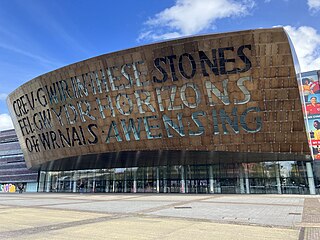
Wales Millennium Centre (WMC) is Wales' national arts centre located in the Cardiff Bay area of Cardiff, Wales. The site covers a total area of 4.7 acres (1.9 ha). Phase 1 of the building was opened during the weekend of 26–28 November 2004 and phase 2 opened on 22 January 2009 with an inaugural concert.
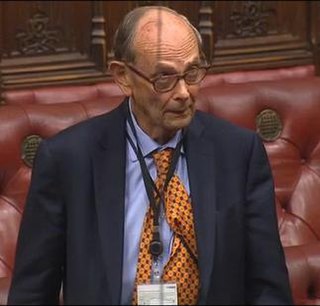
Roger Nicholas Edwards, Baron Crickhowell, PC was a British Conservative Party politician who served as an MP from 1970 until 1987 and as Secretary of State for Wales during the first two terms of the Thatcher government.

Maggie's centres are a network of drop-in centres across the United Kingdom and Hong Kong, which aim to help anyone who has been affected by cancer. They are not intended as a replacement for conventional cancer therapy, but as a caring environment that can provide support, information and practical advice. They are located near, but are detached from, existing NHS hospitals.

The Senedd building, in Cardiff, houses the debating chamber and three committee rooms of the Senedd. The 5,308-square-metre (57,100 sq ft) Senedd building was opened by Queen Elizabeth II on 1 March 2006, Saint David's Day, and the total cost was £69.6 million, which included £49.7 million in construction costs. The Senedd building is part of the Senedd estate that includes Tŷ Hywel and the Pierhead Building.

The Riverfront is the principal and newest theatre and arts centre in the City of Newport. It is located on the west bank of the River Usk on the Bristol Packet Wharf in the city centre. Designed by architectural firm Austin-Smith:Lord, the centre was opened on 23 October 2004.

Tŷ Hywel is a building in Cardiff, Wales, used by the Senedd. It is named after the medieval king Hywel Dda, King of Deheubarth in South West Wales. The building was previously known as Crickhowell House, after the former Secretary of State for Wales, Lord Crickhowell. It houses Members of the Senedd and their staff, as well as staff of the Senedd Commission. The Welsh Government also operates from the building and occupies one whole floor and part of another. It is leased by the Senedd under the Government of Wales Act 1998.
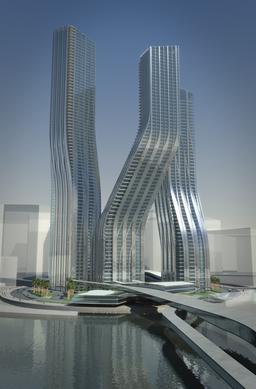
Signature Towers was a proposal for a three-tower, mixed-use complex in Dubai, United Arab Emirates. It was designed by Iraqi born architect Zaha Hadid after winning an international design competition which included proposals from OMA and Reiser & Umemoto among others. The developers were Dubai Properties, the company responsible for the earlier Jumeirah Beach Residence. Apart from these three towers, the project would also include a new building to house the Dubai Financial Market, a large podium containing retail space and a pedestrian bridge crossing the creek extension.

Vilnius Guggenheim Hermitage Museum was a proposed art museum in the city of Vilnius, the capital of Lithuania. On April 8, 2008, an international jury named Zaha Hadid, a British-Iraqi architect, the winner of the international design competition for the museum. The museum was initially scheduled to open in 2011. Later, it was announced, that museum was scheduled to open in 2013. However, the project was postponed due to alleged illegal channeling of funds to the Jonas Mekas Arts Center and has been under investigation since 2010. The museum project, as of March 2012, was reported as having regained support, including that of the Vilnius mayor, Arturas Zuokas, even though the embezzlement inquiry was still ongoing.
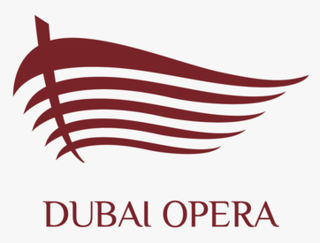
Dubai Opera is a 2,000-seat, multi-format, performing arts centre, which is located within The Opera District in Downtown Dubai. It was developed by Emaar Properties to host a variety of performances and events including theatre, opera, ballet, concerts, conferences and exhibitions. Its plans were announced by Sheikh Mohammed bin Rashid Al Maktoum in March 2012 and it was completed in 2016. It opened on 31 August 2016 with a performance by Plácido Domingo. The first season featured Bizet's The Pearl Fishers opera and also the tenor José Carreras. Dubai Opera has flat floor capacity of 1,800 m2 (19,000 sq ft). This floor can be hired for weddings, gala dinners, fashion shows and exhibitions.

Cardiff has many cultural sites varying from the historical Cardiff Castle and out of town Castell Coch to the more modern Wales Millennium Centre and Cardiff Bay. Cardiff was a finalist in the European Capital of Culture 2008.

The BMW Central Building Located in Leipzig, Germany was the winning design submitted for competition by Pritzker Prize winning architect, Zaha Hadid. The central building is the nerve center for BMW's new $1.55 billion complex built to manufacture the BMW 3 Series.

Architecture in Cardiff, the capital city of Wales, dates from Norman times to the present day. Its urban fabric is largely Victorian and later, reflecting Cardiff's rise to prosperity as a major coal port in the 19th century. No single building style is associated with Cardiff, but the city centre retains several 19th and early 20th century shopping arcades.
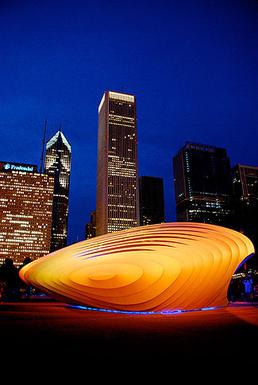
The Burnham Pavilions were public sculptures by Zaha Hadid and Ben van Berkel in Millennium Park, which were located in the Loop community area of Chicago, Illinois. Both pavilions were located in the Chase Promenade South. Their purpose was to commemorate the 100th anniversary of Daniel Burnham's Plan of Chicago, and symbolize the city's continued pursuit of the Plan's architectural vision with contemporary architecture and planning. The sculptures were privately funded and reside in Millennium Park. The pavilions were designed to be temporary structures.

MAXXI is a national museum of contemporary art and architecture in the Flaminio neighborhood of Rome, Italy. The museum is managed by a foundation created by the Italian ministry of cultural heritage. The building was designed by Zaha Hadid, and won the Stirling Prize of the Royal Institute of British Architects in 2010.

Guangzhou Opera House is a Chinese opera house in Guangzhou, Guangdong province, People's Republic of China. Designed by Zaha Hadid, it opened on 9 May in 2010.

Percy Thomas Partnership was the trading name of the award-winning British architectural practice established some time between 1965 and 1973 as the successor to a series of earlier partnerships originally set up by Percy Thomas (1883–1969) in Cardiff, Wales in 1911/12. Percy Thomas and the Percy Thomas Partnership put their name to a number of landmark buildings in the United Kingdom including the Wales Millennium Centre, Cardiff. It opened offices overseas and completed a number of prestigious buildings in Hong Kong.
Zaha Hadid Architects is a British architecture and design firm founded by Zaha Hadid (1950–2016), with its main office situated in Clerkenwell, London. After the death of "starchitect" Hadid, Patrik Schumacher became head of the firm, at the time with a staff of 400 with 36 projects across 21 countries.

The Port Authority Building, or the Port House, is a government building located in Antwerp, Belgium, built between 2009 and 2016. It is located in the area of Eilandje, in the Port of Antwerp, and acts as the new headquarters of the Antwerp Port Authority, housing various departments. Designed by Iraqi-British architect Zaha Hadid, the building opened in 2016, the year of her death. It is the sole government building designed by Hadid. The design of the building incorporates the use of a fire station, integrating it into the building. Attached above and connected to the fire station is a contemporary diamond-shaped structure marked by straight edges, with an additional column providing support from the floor.



















